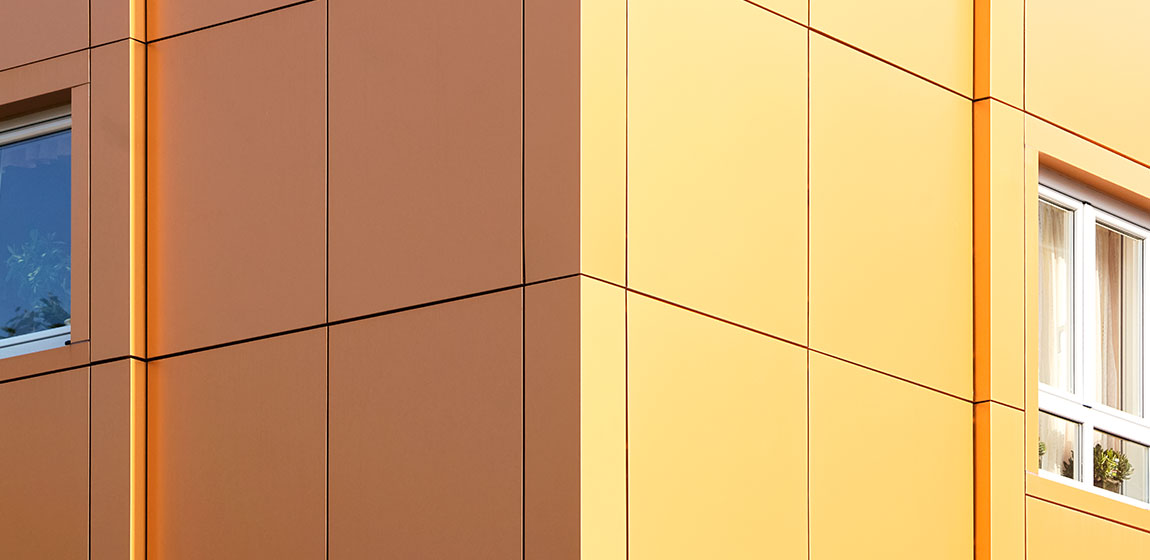6 Facts About Composite Metal Panels You Might Not Know | CLEARVIEW CLADDING CONCEPTS

- By : adrianmarku
- 0 Comments
Composite metal panels are one of the most versatile building materials on the market. They offer a combination of strength, durability, and energy efficiency. Composite metal panels are made from recycled steel, post-industrial waste, and other materials such as plastic and glass. These materials are melted down into liquid form before being molded into the shape of a panel. But how much do you know about how this material works? Here’s what we’ve learned about CMP over the years.
What Are Composite Metal Panels?
Composite metal panels are a combination of a metal mesh and a polymer. They can be made with recycled materials, making them lightweight, strong, durable, and eco-friendly. The composite structure makes them resistant to corrosion, fire-resistant, and impact resistant.
Robust Physical Properties
Composite metal panels are solid, durable, and resistant to corrosion. They are also unaffected by moisture so they can be used for many applications, including in bathrooms or kitchens. In addition to their durability, composite metal panels come in a variety of colors, which means you can customize the look of your home or business.
Non-Toxic
Another compelling factor in favor of composite metal panels is that they are non-toxic. Rather than containing harmful chemicals, composite metal panels are made from recycled materials. This means that when you go to install your new siding, there is no need for protective gear or ventilation equipment around the job site. Composite metal panels also have a much lower carbon footprint than their vinyl counterparts, which means that when you install them on your house, you can feel good knowing that your family will be healthier and safer while living in a home with this type of exterior covering as opposed to one with traditional vinyl siding.
Eco-Friendly
Composite metal panels are eco-friendly. That is because they can be recycled and reused when removing them from your home or business. Not only that, but they are made from 100% recycled materials, which means they can be reused repeatedly. Composites are made using post-industrial content or post-consumer content (also known as PCM). This means that the entire composite metal panel has been created using either recycled products or products that have had their useful life in a consumer product finished. This saves natural resources by not producing any waste while creating composites!
Lightweight
You might be surprised to learn that composite metal panels are lighter than traditional ones. While it’s true that the additional layers of material in a composite panel make them slightly thicker than their steel counterparts, they are still quite lightweight compared to other types of building materials. Because of this, they can be easily transported by truck or forklift and installed on-site without requiring any heavy machinery.
Fire Resistant
Composite metal panels are also fire resistant, which means that if you have a fire in your home or office, the composite metal panels will not be damaged by heat. They may even help contain the spread of smoke and flames around your structure.
How do composite metal panels get their fire resistance? Well, they’re made up of three layers: (1) a base layer made of either galvanized steel or aluminum; (2) an aluminum skin that is bonded on top of this base layer; and (3) a thin coating called an organic finish or “skin.” This organic finish contains a polymer matrix mixed with titanium dioxide and zinc oxide that protects against ultraviolet rays from sunlight. The whole thing is then coated with color pigments, for aesthetics’ sake!
Available In Diverse Range Of Colors
Composite metal panels are available in a wide range of colors and finishes. They can be painted, stained, powder coated, and anodized to meet your needs. At the same time, they can be polished or coated with a clear sealer if you prefer something more subtle.
